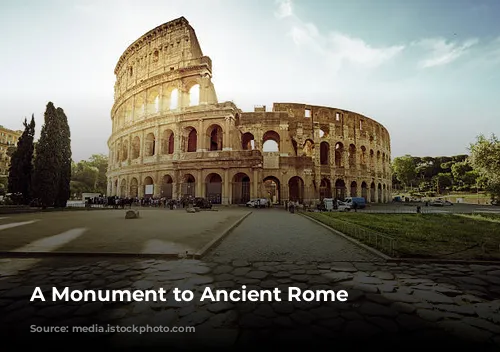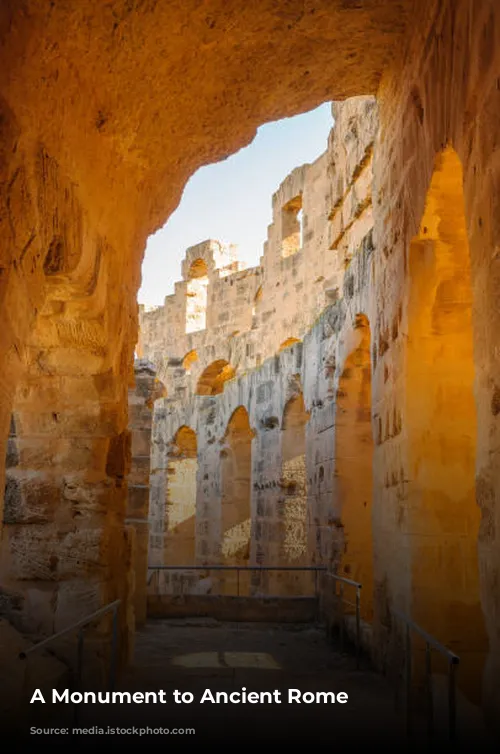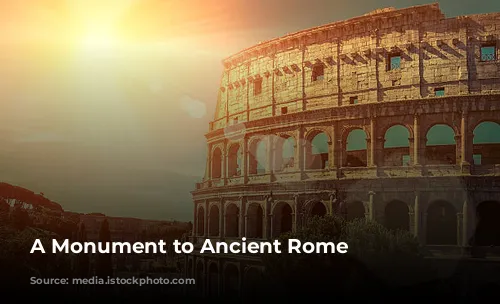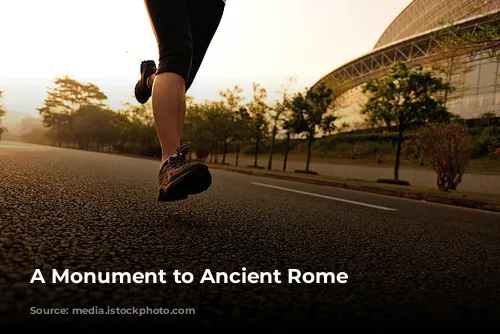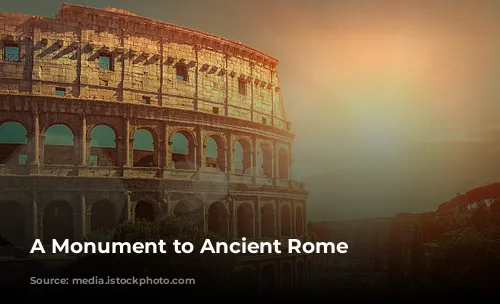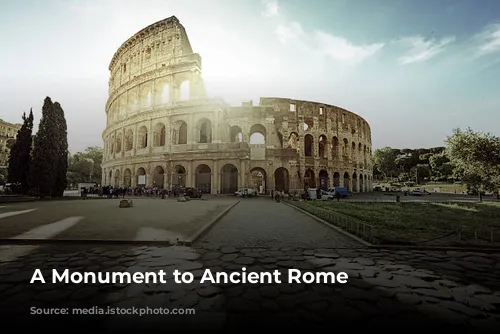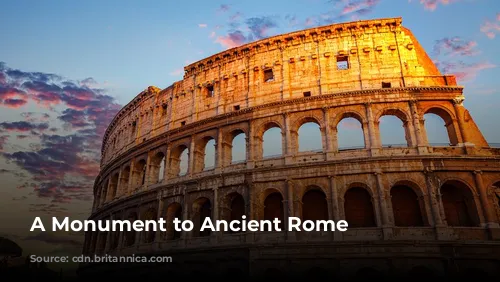Standing proudly as one of the few mostly intact structures from the Roman Empire, the Colosseum serves as a powerful testament to the architectural and engineering brilliance of ancient Rome. It’s not just a historical marvel but also a significant source of income for the Italian government. In 2018, the Colosseum, Roman Forum, and Palatine Hill collectively raked in over $63.3 million (€53.8 million), making it the most popular tourist destination in Italy.
This section highlights the Colosseum’s importance as a symbol of Roman power and a major tourist attraction. It emphasizes the significant revenue generated from tourism.
A History of Neglect and Rebirth
The Colosseum’s story is one of both glory and decline. After the fall of the Western Roman Empire, the majestic structure fell into a state of serious disrepair. During the 12th century, the Frangipane and Annibaldi families, powerful Italian families of the time, repurposed the arena as their fortress, transforming the grand amphitheater into a stronghold. Later, in the late 15th century, Pope Alexander VI allowed the Colosseum to be used as a quarry, its once-glorious stones stripped away to build other structures.
This section details the Colosseum’s gradual decay after the Roman Empire’s fall and its use as a fortress and quarry. It conveys a sense of sadness and disappointment over the structure’s neglect.
For over a thousand years, the Colosseum was left to decay. It was only in the 1990s that state-funded restoration efforts began, breathing new life into the ancient wonder.
This section emphasizes the long period of neglect and the recent efforts to restore the Colosseum.
A Stage for Spectacles
The Colosseum was built as part of a grand imperial effort to reinvigorate Rome after the tumultuous year of the four emperors in 69 CE. Similar to other amphitheaters, the emperor Vespasian envisioned the Colosseum as a place for entertainment, hosting thrilling gladiatorial contests, exciting animal hunts, and even mock naval battles.
This section highlights the purpose behind the Colosseum’s construction and its role in providing entertainment for the Roman populace.

From Foundation to Completion
The construction of the Colosseum commenced under the reign of the Roman emperor Vespasian between 70 and 72 CE. Its completion was marked by its dedication in 80 CE by Titus, Vespasian’s son and successor. In 82 CE, the emperor Domitian added the Colosseum’s fourth story. Interestingly, the arena’s funding came from the spoils of Titus’s conquest of Jerusalem in 70 CE, and it was constructed by enslaved Jews from Judaea.
This section outlines the construction timeline of the Colosseum, highlighting the role of different Roman emperors and the source of its funding and construction labor.
An Architectural Marvel
The Colosseum, also known as the Flavian Amphitheatre, is an elliptical structure made of stone, concrete, and tuff, standing four stories high at its peak. Measuring 620 by 513 feet (189 by 156 meters), this architectural masterpiece could accommodate up to 50,000 spectators. It was famously used for gladiatorial combat, a popular form of entertainment in ancient Rome.
This section provides a detailed description of the Colosseum’s physical characteristics, including its size, materials, and capacity.
A Symbol of Imperial Power
The Colosseum, located east of the Palatine Hill on the grounds of Nero’s Golden House, stands as a symbol of imperial power. Its construction was a deliberate choice, replacing Nero’s private lake with a public arena that could accommodate tens of thousands of Romans.
This section emphasizes the symbolic significance of the Colosseum’s location, replacing Nero’s lavish private lake with a public space for the masses.
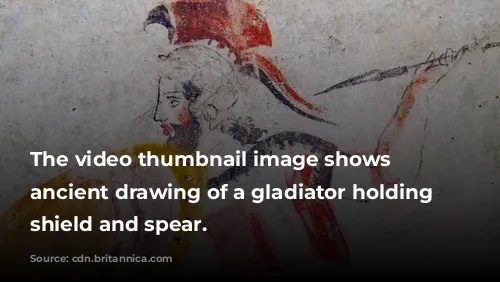
A Masterpiece of Engineering
Unlike earlier amphitheaters, which often relied on hillsides for support, the Colosseum is a freestanding structure made of stone and concrete. It utilizes a complex system of barrel vaults and groin vaults. Its three stories are encircled by arcades, adorned with engaged columns in the Doric, Ionic, and Corinthian orders. The Colosseum’s ascending arrangement of columns served as the basis for the Renaissance codification known as the assemblage of orders. The main structural framework and facade are constructed from travertine, while the secondary walls are volcanic tufa. The inner bowl and arcade vaults are made of concrete.
This section details the Colosseum’s unique architectural features, highlighting its freestanding structure, complex vaulting system, and the use of different building materials.
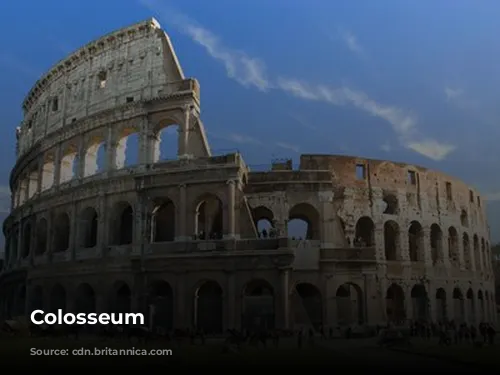
A Stage for Spectacles and History
The amphitheater could seat around 50,000 spectators, protected from the sun by a massive retractable awning called a velarium. Supporting masts extended from corbels built into the Colosseum’s top story, and hundreds of Roman sailors were responsible for manipulating the rigging to extend and retract the velarium. The Colosseum witnessed countless gladiatorial combats, contests between humans and animals, and even mock naval engagements. However, the historical accuracy of its use for the martyrdom of early Christians remains uncertain.
This section details the Colosseum’s capacity, its unique retractable awning, and the various types of spectacles that were held within its walls.
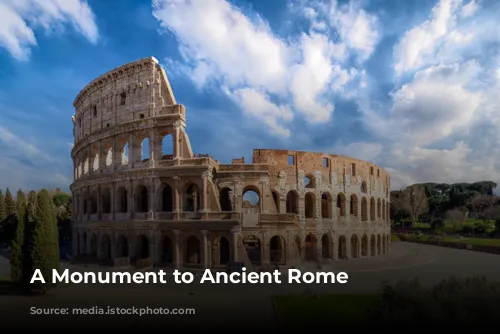
From Glory to Restoration
During the medieval period, the Colosseum was repurposed as a church and later served as a fortress for two prominent Roman families, the Frangipane and the Annibaldi.
This section details the Colosseum’s use during the medieval period.
Over time, the Colosseum suffered damage from lightning strikes, earthquakes, vandalism, and pollution. Its marble seats and decorative elements were stripped away as it was used as a quarry for over a thousand years.
This section details the gradual decay of the Colosseum due to natural disasters and human neglect.
The preservation of the Colosseum began in earnest in the 19th century, with significant efforts led by Pius VIII. A major restoration project was undertaken in the 1990s.
This section highlights the beginning of the Colosseum’s preservation efforts.
Today, the Colosseum remains a prominent tourist attraction in Rome, welcoming almost seven million visitors annually. Regular exhibitions showcasing the culture of ancient Rome are hosted within its walls.
This section emphasizes the Colosseum’s continuing importance as a tourist destination and its role in showcasing Roman culture.
The Colosseum stands as a powerful reminder of ancient Rome’s grandeur and its ability to endure the passage of time. From its days as a stage for gladiatorial combat to its current role as a symbol of history and resilience, the Colosseum continues to captivate and inspire visitors from around the world.
This concluding section emphasizes the Colosseum’s enduring legacy and its continued relevance as a symbol of ancient Rome.
